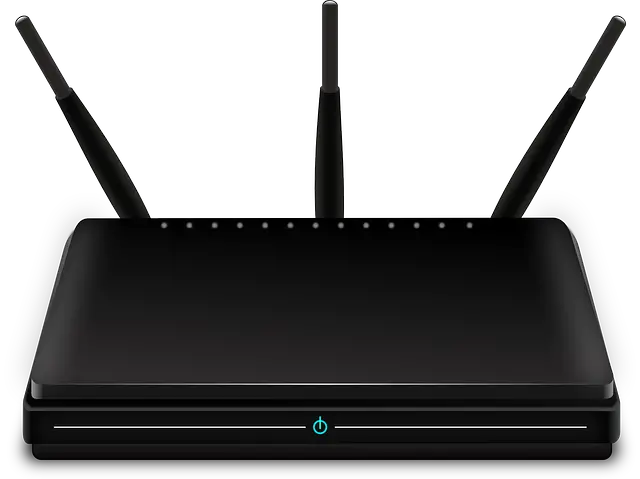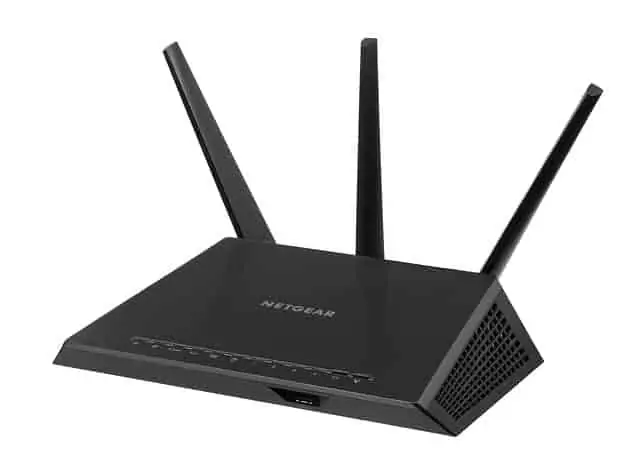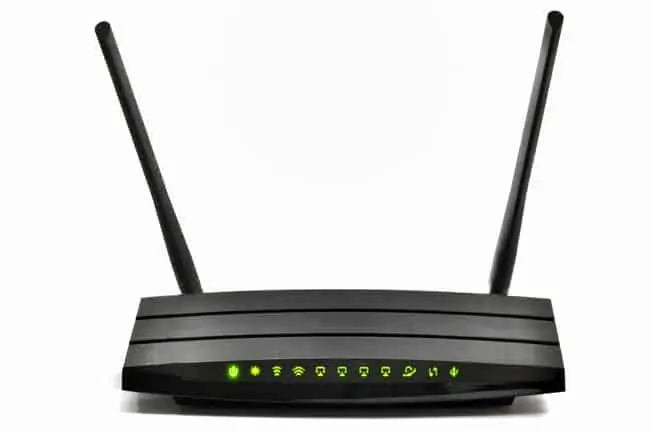Most newly supplied routers from internet providers come with dual band as standard, but for those users still using a single band router, is it worth upgrading to a dual band router? Who needs to do this and who doesn’t?
In this article, we’ll distinguish between single band and dual band routers to give a complete answer to the question. Here is a brief summary answer:
Upgrading to a dual band router can be useful on congested home networks where it is better to split users across the two separate bands, and also to fully exploit super high speed internet plans. Otherwise, single band routers will serve the needs of most users adequately.
Even this is quite a generalized statement though, and each scenario will differ. For example, the 5 GHz band on dual band routers can potentially deliver higher speeds for HD streaming and downloading, but only at short to moderate distances, since the 5 GHz signal falls off more over distance than the 2.4 GHz Wi-Fi. Therefore, over distance, the 2.4 GHz band can actually perform better.
One of the best scenarios where an upgrade to a dual band router can be worth it when you are living in an apartment block where 5 GHz has a better chance of working well over shorter distance. In larger houses, it’s less clear whether a dual band router is always worth it, but there are still pros and cons to consider.
Therefore, there are some decisions to be made before deciding whether it’s worth buying a dual band router. We’ll try and present as complete a comparison and contrast as possible between single/dual band routers, including all the potential factors that can play into wireless technology, to help readers make a decision as to whether they need a dual band router or not.
What is a Dual Band Router?
We assume most readers have a general idea of this, but let’s very briefly explain what exactly is a dual band router.
A dual band router is a router which has two separate wireless frequency bands – a 2.4 GHz band and a 5 GHz band – for devices to connect to. This is in contrast to the older single band routers, which has only one wireless band to connect to – 2.4 GHz only.
And that’s really it! For all intents and purposes, a single band and dual band router will look pretty much the same (a dual band model might look slightly newer). It’s just the presence of the extra Wi-Fi band that’s different.
The presence of two bands is meant to support higher speeds, since 5 GHz is potentially more powerful, but there are some caveats to this, which we’ll turn to now in a more detail comparison of single vs dual band router features.

A dual band router will look the same as a single band one, but just has two wireless networks instead of one
Dual Band vs Single Band Router Features
Let’s expand briefly on the previous section by explaining in more detail the clear differences between a single band and dual band router:
Number of bands/SSIDs – A single band router has just one Wi-Fi band (2.4 GHz only), and therefore will transmit only one Wi-Fi username/SSID for you to connect to (eg. Comcast23456). A dual band router has two Wi-Fi bands (2.4 GHz AND 5 GHz), and therefore transmits two Wi-Fi usernames/SSIDs for each band, so you can decide which one to connect to. For example, a dual band router with both bands enabled will emit two usernames (like eg. Comcast45667 (2.4 GHz) and Comcast45667 (5 GHz)) from the same router. Each band is almost like a separate access point you can connect to, but emitted from the same router.
Signal/Speeds – Adding this extra band adds an interesting new dimension to the signal and speeds the router can provide. The 2.4 GHz band you’ll find on a single band model passes through walls better and therefore works well over distance, but only supports low to moderate speeds. The 5 GHz band that is also on a dual band router supports potentially much high speeds, but the signal also fades out more quickly over distance than the 2.4 GHz band, creating an interesting tradeoff of potentially higher speeds on dual band, but only if you are close enough to fully exploit the extra capability of the 5 GHz signal, since it does not travel through walls as well as other bands. You’ve got more chance of this in smaller dwellings like apartments than large houses, where 2.4 GHz might work better.
Number of supported devices – Because a single band router has only a 2.4 GHz band, it can become quickly overloaded if a lot of devices are trying to connect, causing slower speeds, lag, buffering and so on. Because a dual band router has two separate bands, devices and bandwidth demands can be spread out over these two separate bands to alleviate congestion issues. Some users can connect to the 2.4 GHz band and others can connect to the 5 GHz band. One band isn’t doing all the work anymore.
Now let’s apply some of these criteria to actually give some scenarios of when a dual band router might (and might not) be worth it.
When You Might Want a Dual Band Model
Let’s look at some cases when getting a dual band router might make sense:
- If you have a lot of users connecting to the router, and you want to spread traffic out over two bands instead of one to reduce congestion. The 2.4 GHz band can become quickly bogged down and slow if too many devices are trying to connect.
- Bandwidth demands are generally high in your house (links to above point – more users = more bandwidth needed).
- Your internet plan is a super high speed one and you want to exploit these extra speeds. Especially for gigabit Fiber to the Home (FTTH) connections, you will need a dual band router to exploit the higher speeds if you are going to stay on Wi-Fi. Single band won’t get even close to 1 Gbps speeds; you need 5 GHz for that.
- For high speed internet plans that aren’t quite gigabit (eg. 300 Mbps), then a dual band router might again be needed to exploit the higher speeds on Wi-Fi
- You are suffering from interference issues using a single band router. Lots of other devices also use the 2.4 GHz band (like Bluetooth, cordless phones, microwaves etc), so moving onto a router which also has a 5 GHz band may reduce interference issues.
- You live in a crowded space like an apartment block, with lots of different Wi-Fi networks in close range. Again there can be interference issues here using 2.4 GHz Wi-Fi, which moving onto dual band might help you alleviate. The shorter distances and fewer walls in apartments can also make 5 GHz more effective than in larger houses.
- If you watch a lot of HD movies online, then it might also be better to get a router with 5 GHz, but remember the caveat about distance, since 5 GHz degrades more over distance, so only if you are still reasonably close to the router.
When You Might NOT Need One
Now let’s look at some scenarios where it might not be worth upgrading to a dual band router:
- There aren’t many users connecting to your router, perhaps only you or you and a few others, so you can manage fine on just the 2.4 GHz band.
- If you live in a large house, it can be tricky, because 2.4 GHz works better over distance, so you might be better sticking with that. However, if you’ve also a lot of users AND a large house, you can benefit from having two bands to spread devices across. So weigh up distance versus number of users to decide here.
- Your current internet package isn’t capable of super high speeds anyway:
-
- Less than 20 Mbps – no point in using dual band
- Less than 50 Mbps – worth thinking about, but still not essential.
- 100 Mbps+ speeds – A dual band router could help you exploit these speeds.
-
- Bandwidth demands in your home are generally low anyway.
- You aren’t really experiencing any congestion issues from nearby devices also using RF waves, or nearby Wi-Fi networks. Your Wi-Fi seems to work fine as it is.
- You are actually using Wi-Fi a long way from your router, because the 2.4 GHz band actually performs better over distance than the 5 GHz band. So no point upgrading to dual band if the signal might be even worse at distance using 5 GHz.
- If you perform a speed test on single band 2.4 GHz Wi-Fi, and your throughput (delivered speed) is fine anyway (20 Mbps +). No need to upgrade to dual band.
- Some people do also have safety concerns about 5 GHz Wi-Fi technology. If so, stay away from dual band routers and stick to single band, which uses only the 2.4 GHz frequency, or else disable the 5 GHz band and just use 2.4 GHz or wired connections only.
- I believe dual band gaming routers are massively oversold for gamers, because the signal fades out more quickly over distance on 5 GHz anyway, plus the fact that latency is far more important than speeds for gamers to keep ping low. Usually not needed, except for crowded home networks, where some devices can go onto the 5 GHz band to minimize congestion on the 2.4 GHz band. Always try to use wired connections anyway for gaming though.
In these cases, there’s no need to pay for a dual band router if you current internet usage doesn’t warrant it. You can manage fine on a single band router.
Some Single & Dual Band Router Models
Let’s take a quick look at some single and dual band router models from well known brands for users thinking of upgrading, or staying on single band but getting a better model.
Budget range (under $30), Single band:
1.TP Link N450 Wi-Fi Router – For users that don’t even need a Gigabit or dual band router and can do everything they need on a single band router, then you cannot look much past this model from TP Link. Superb value for money, excellent speeds anyway (Single band Wi-Fi only, 450 Mbps, plus 4 Fast Ethernet (up to 100 Mbps) ports on the back. Perfectly fine for a lot of users who don’t even need Gigabit speeds or two bands)
And now onto some popular dual band routers which do have 2.4 GHz and 5 GHz bands:
Budget range (under $40), Dual band:
2. TP Link Archer A6/C6 Gigabit Router – Cheaper end of the range. Equipped with dual band Wi-Fi (300 Mbps for 2.4 GHz band and 900 Mbps for 5 GHz band) and 4 Gigabit LAN ports.
Medium range ($70-100), Dual band:
3. TP Link AC 1900 Smart Wi-Fi Gigabit Router (Archer A8) – Dual band Wi-Fi (up to 600 Mbps on the 2.4 GHz band and 1300 Mbps on the 5 GHz band), plus 4 Gigabit enabled LAN ports.
4. Netgear R6700 Smart Wi-Fi Router (AC1750) – Dual band Wi-Fi (up to 1750 Mbps speed), 4 Gigabit LAN ports. Can give up to 1600 sq. ft. of coverage, and handle 20+ devices, plus ethernet ports all fully Gigabit capable.

High range ($120+), Dual band and gigabit enabled:
5. Asus AX3000 Wi-Fi Router – Dual band Wi-Fi (Up to 575 Mbps on the 2.4 GHz band and 2400 Mbps on the 5 GHz band), plus 4 fully Gigabit enabled LAN ports. For very large homes.
Remember though that the criteria we listed above should be ticked off to make it worth it, otherwise you might be wasting money on something you don’t even need. Also remember that the maximum top speeds quoted are theoretical maximums. You can usually get much closer on ethernet (plugged into a port), but on Wi-Fi it’s much harder because the signal drops out over distance (especially on 5 GHz), so take the maximum dual band speeds with a grain of salt.
Are Routers Available With Only 5 GHz Wi-Fi?
We’ve already covered how the dual band routers have both the 2.4 GHz and 5 GHz bands, and older routers are single band 2.4 GHz ones, but can you get routers now that have only the 5 GHz Wi-Fi band on them?
Routers with only 5 GHz Wi-Fi are not available. It is possible to purchase a router with 2.4 GHz Wi-Fi only (single band) or 2.4 GHz and 5 GHz Wi-Fi (dual band), but not with only 5 GHz Wi-Fi on it’s own.
As an alternative, it is possible, but not often recommended, to disable 2.4 GHz Wi-Fi on a dual band router and run only 5 GHz Wi-Fi on it’s own. More often, it’s the opposite, with users not needing the 5 GHz band, and disabling it and running just the 2.4 GHz band on it’s own on smaller networks with only a few devices and lower bandwidth demands.
